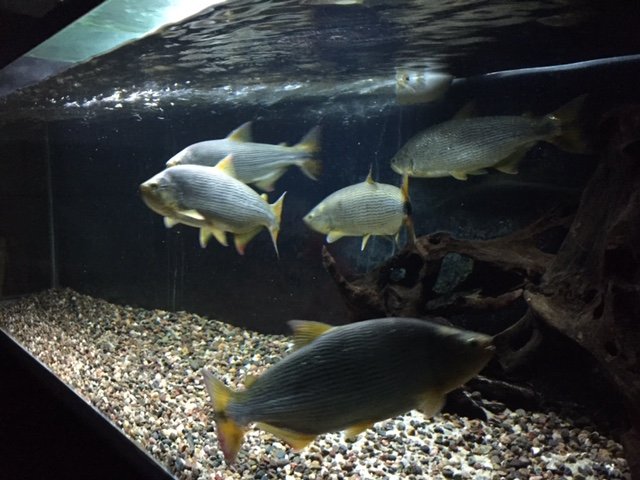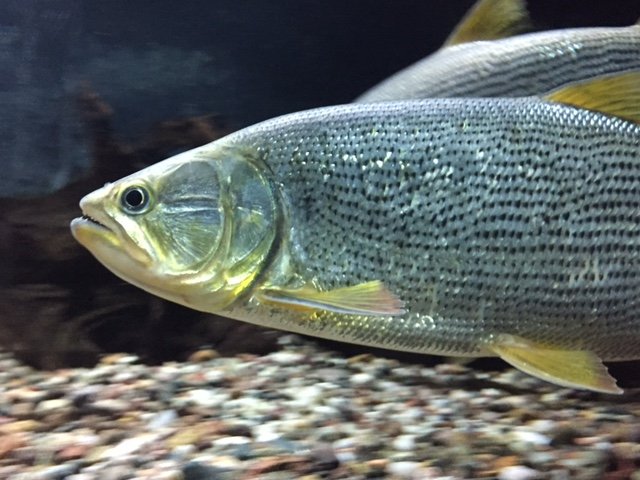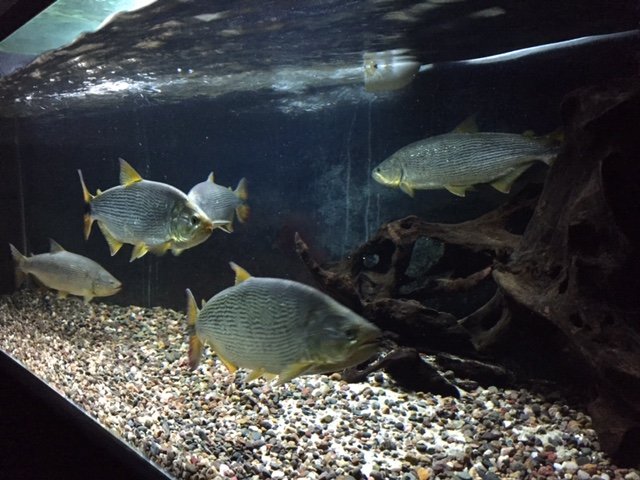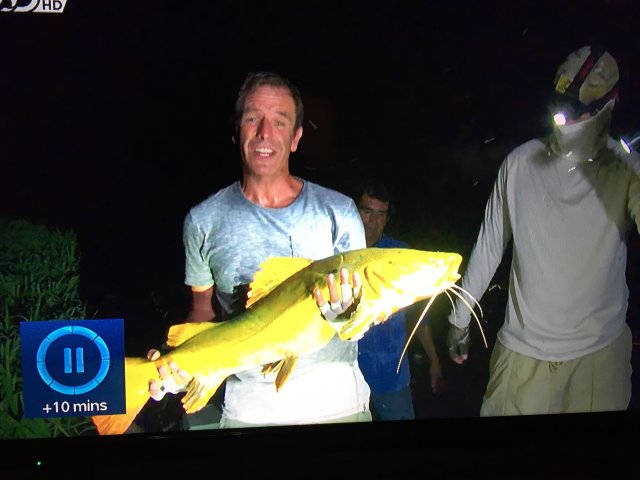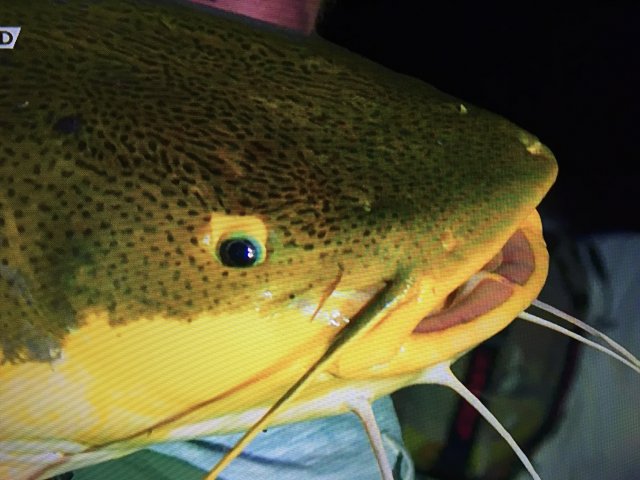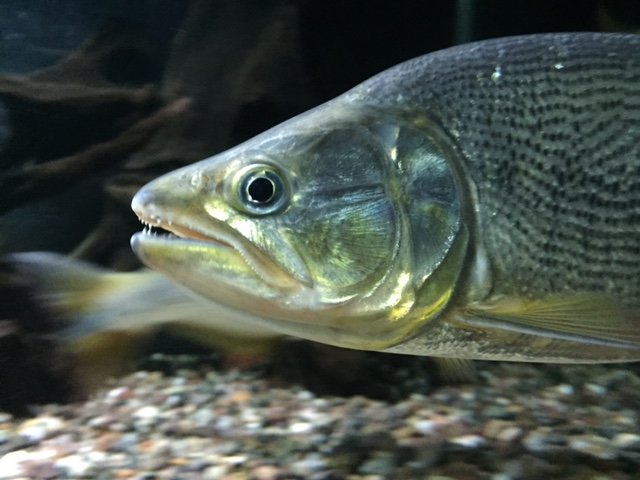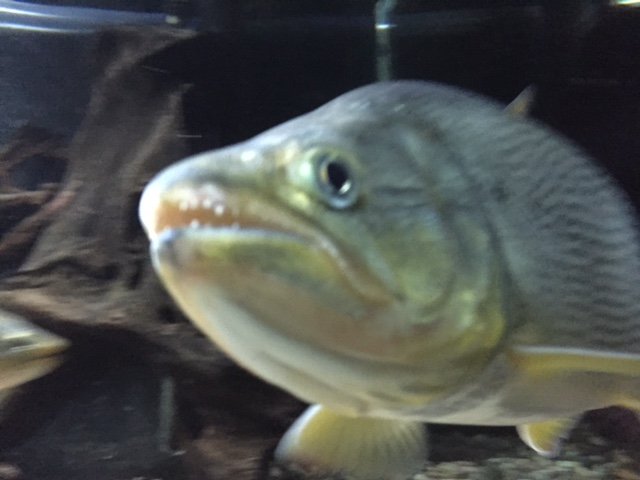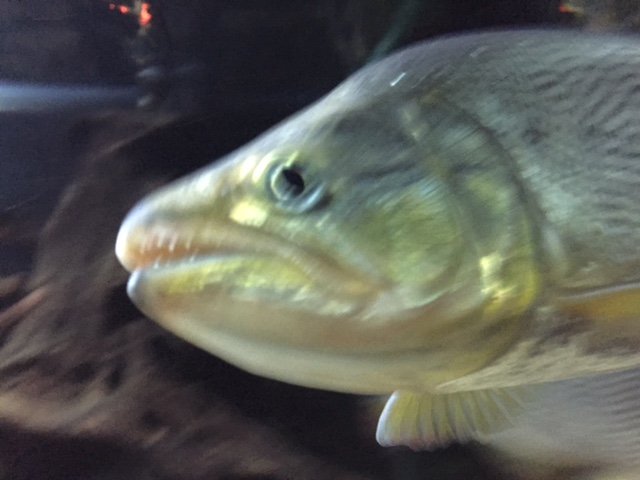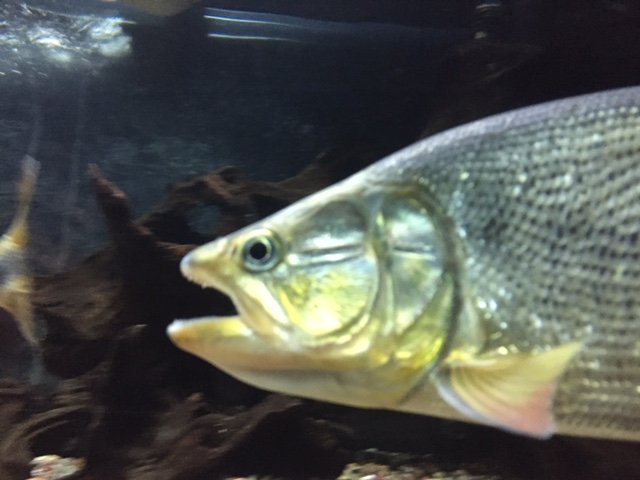Salminus Franciscanus (Golden Dorado)
- Thread starter kendragon
- Start date
You are using an out of date browser. It may not display this or other websites correctly.
You should upgrade or use an alternative browser.
You should upgrade or use an alternative browser.
Sorry for all the photos and videos but I want to make sure the progression is captured for future reference. You never know when an Incoming Alert is going to happen. This is not a drill!. Going to do a WC tonight just in case.
Feeding frenzy. They are so strange. They will not smash the pellets going down. They will circle around and around hunting for it like a thrill for the hunt. Once they get it, they spit it in and out like they are positioning it for head first ingestion. Check it out in the vid.
Feeding frenzy. They are so strange. They will not smash the pellets going down. They will circle around and around hunting for it like a thrill for the hunt. Once they get it, they spit it in and out like they are positioning it for head first ingestion. Check it out in the vid.
That is very interesting. Wonder if the catfish guru knows anything of this.Was watching robson green fishing in Bolivia for Golden dorado earlier and obviously he caught some amazing yellow looking dorado but also in the same water he caught a rtc and it looked gold wondering if this was the water doing this. Have you seen this before.
View attachment 1294258 View attachment 1294259
It's going to take years for color guys. 
From Pantanal Escapes:
There is little visual differentiation between the males/females - except some minor physical differences on the anal fin. The most obvious indication is likely to be the size as females grow to be considerably larger - reaching 30 kg. By contrast, the males grow only to around 10 kg.
Behaviour and Habitat
Based on it's mood, the dorado switches from being Dr Jekyll to Mr. Hyde. It can be mild and timid or it can be a savage predator. It sits at the top of the food chain - actively hunting other smaller fish. It's sharp teeth and powerful jaws make a quick meal of anything that gets in its way - with its jaws very occasionally turning on swimmers or fisherman exercising insufficient care with the fish they've just reeled in. Their favourite hunting grounds appear to be the rough water near waterfalls and rapids, or the entryways into lakes and streams. They also shelter under fallen trees or other underwater obstructions, using them as a station to hunt. The dorado's diet consists primarily of other fish - but analysis of stomach contents have also shown them to eat large inserts, small vertebrates (such as rodents), snakes, lizards and birds.
Dorado are migratory - moving up and down the regions' connected river systems as the seasons, temperature and food sources change. They occupy a range of freshwater environments stretching across southern Brazil, northern Argentina, Uruguay, and into Bolivia and Paraguay. This habitat includes the river basins of the Paraguai (and Pantanal), Uruguai, Chaparé, and Mamoré Rivers, plus the drainage area of the Lagoa dos Patos lagoon in the Brazilian state of Rio Grande do Sul. Close relatives of the dorado can also be found in the Rio São Francisco (Salminus franciscanus); the upper Paraná, Amazon and Orinoco basins (Salminus hilarii or tabarana); and in the Santiago and Magdalena basins of Ecuador and Colombia (Salminus affinis or Dorada/Rubia).
Reproduction
Dorados' behaviour is generally solitary, but changes in the reproductive period of late spring and summer (Oct-Mar). During this time, dorado will flock together are they migrate back towards their breeding grounds - sometimes jumping up small waterfalls and rapids. This period, known as the piracema (spawning) is crucially important for the protection of Pantanal fish stocks - coinciding with a total fishing ban. According to some literature, the migration journey is around 400 km, with a daily average distance travelled of around 15 km. Unfortunately, the construction of dams and other barriers can block off dourados' migration paths - which is why the maintenance of the Pantanal is so important, as its main waterway, the Paraguai river, is the last major river in the area to remain undammed.
Females reach maturity at around 4 or 5 years of age, and will start to take part in the annual spawning. Each female dorado can deposit up to 2 million eggs. The emergence of the young fish coincides with the period of peak food availability - making it a little easier dorado to survive. However, the eggs and young dorado are defenceless - meaning that they also make a good meal for other opportunistic predators (including other larger dorado). As a result, few young dorado ever reach maturity. Notably, immature dorado are silver in colour - making them easily confused with the closely-related Tabarana (Salminus hilarii). However, they yellow-gold tone gets strong as the dorado age. These are a slow-growth fish - with a lifespan exceeding 15 years. Sadly, increased environmental pressures and overfishing across much of its range mean that fewer fish are reaching this age - with both their size and numbers decreasing.
From Pantanal Escapes:
There is little visual differentiation between the males/females - except some minor physical differences on the anal fin. The most obvious indication is likely to be the size as females grow to be considerably larger - reaching 30 kg. By contrast, the males grow only to around 10 kg.
Behaviour and Habitat
Based on it's mood, the dorado switches from being Dr Jekyll to Mr. Hyde. It can be mild and timid or it can be a savage predator. It sits at the top of the food chain - actively hunting other smaller fish. It's sharp teeth and powerful jaws make a quick meal of anything that gets in its way - with its jaws very occasionally turning on swimmers or fisherman exercising insufficient care with the fish they've just reeled in. Their favourite hunting grounds appear to be the rough water near waterfalls and rapids, or the entryways into lakes and streams. They also shelter under fallen trees or other underwater obstructions, using them as a station to hunt. The dorado's diet consists primarily of other fish - but analysis of stomach contents have also shown them to eat large inserts, small vertebrates (such as rodents), snakes, lizards and birds.
Dorado are migratory - moving up and down the regions' connected river systems as the seasons, temperature and food sources change. They occupy a range of freshwater environments stretching across southern Brazil, northern Argentina, Uruguay, and into Bolivia and Paraguay. This habitat includes the river basins of the Paraguai (and Pantanal), Uruguai, Chaparé, and Mamoré Rivers, plus the drainage area of the Lagoa dos Patos lagoon in the Brazilian state of Rio Grande do Sul. Close relatives of the dorado can also be found in the Rio São Francisco (Salminus franciscanus); the upper Paraná, Amazon and Orinoco basins (Salminus hilarii or tabarana); and in the Santiago and Magdalena basins of Ecuador and Colombia (Salminus affinis or Dorada/Rubia).
Reproduction
Dorados' behaviour is generally solitary, but changes in the reproductive period of late spring and summer (Oct-Mar). During this time, dorado will flock together are they migrate back towards their breeding grounds - sometimes jumping up small waterfalls and rapids. This period, known as the piracema (spawning) is crucially important for the protection of Pantanal fish stocks - coinciding with a total fishing ban. According to some literature, the migration journey is around 400 km, with a daily average distance travelled of around 15 km. Unfortunately, the construction of dams and other barriers can block off dourados' migration paths - which is why the maintenance of the Pantanal is so important, as its main waterway, the Paraguai river, is the last major river in the area to remain undammed.
Females reach maturity at around 4 or 5 years of age, and will start to take part in the annual spawning. Each female dorado can deposit up to 2 million eggs. The emergence of the young fish coincides with the period of peak food availability - making it a little easier dorado to survive. However, the eggs and young dorado are defenceless - meaning that they also make a good meal for other opportunistic predators (including other larger dorado). As a result, few young dorado ever reach maturity. Notably, immature dorado are silver in colour - making them easily confused with the closely-related Tabarana (Salminus hilarii). However, they yellow-gold tone gets strong as the dorado age. These are a slow-growth fish - with a lifespan exceeding 15 years. Sadly, increased environmental pressures and overfishing across much of its range mean that fewer fish are reaching this age - with both their size and numbers decreasing.
Interesting find, Richyrich! Thanks.That is very interesting. Wonder if the catfish guru knows anything of this.thebiggerthebetter
But it's kind of obvious. When fishing for golden dorado, one is more likely to catch all things golden.
Seriously though, it's probably either the diet, perhaps too many yellow-pigment-containing yammi crustaceans, or a coloration mutation with the xanthic side heavily over-expressed. It looks to still have adequate melanin pigmentation.


